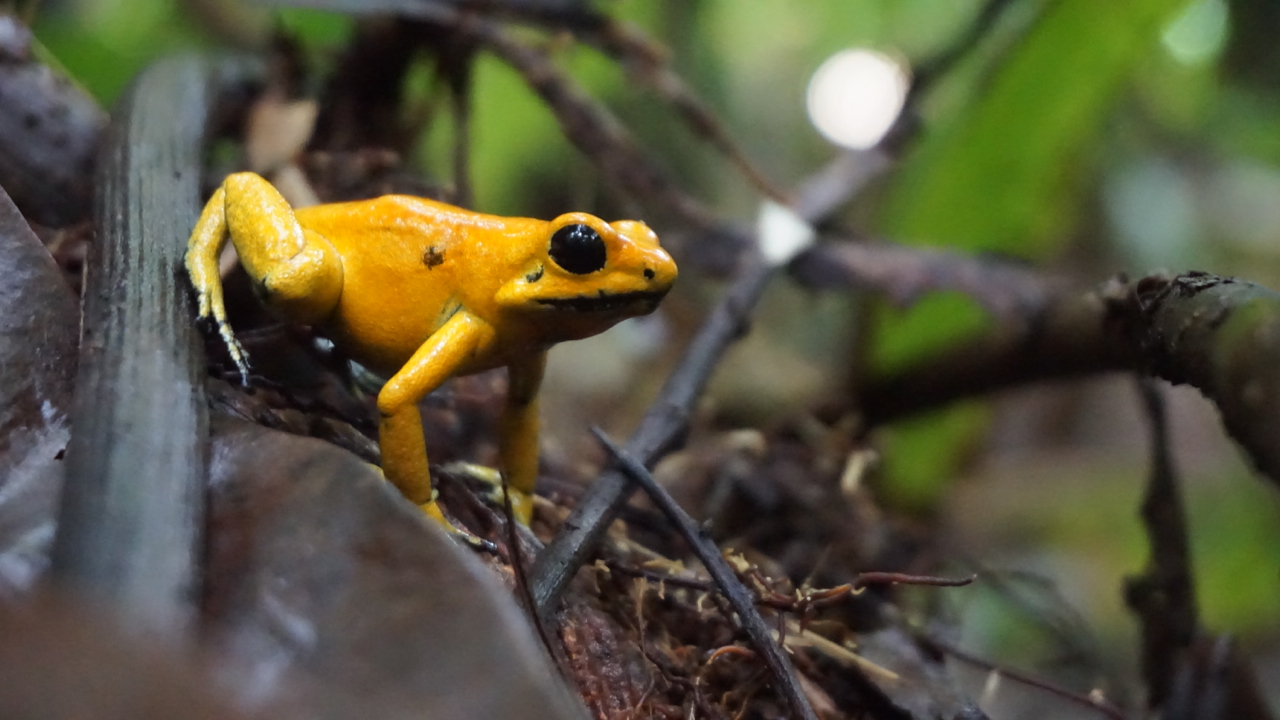Conservation breeding – stock overview on May 1, 2021
A second six months under the Corona crisis – a species conservation program is suffering from lockdowns, too. International projects lie idle, zoos are closed, transport and transfer options are limited. When mobility reduction is the order of the day, even frogs have to keep still. As a result, many projects could only be carried out under reservations. Accordingly, progress has been slow since the last half-yearly review.
When problems confirm the general direction
Working with live animals is different from working with machines. It is alive! – with all the problems and setbacks that go with it. This is where CC’s approach proves itself. The continuous veterinary screening costs are high, but the approach has uncovered several outbreaks of the dreaded frog fungus Bd at once, so that they could ultimately be contained.
Steadiness through coordination
Failures can always occur when working with live animals. Without reporting and coordination, populations in human care quickly die out, as has often happened in the past. In the case of lemur leaf frogs, which are critically endangered in the wild, CC can now take targeted countermeasures and bring new breeding groups together before it is too late. We hope that this will also succeed with the demonic poison frogs. So far, there are not enough animals to build a breeding program. The five specimens kept for CC in 2018 unfortunately died earlier this year.



Amphibian nurseries
In the case of the critically endangered lake Pátzcuaro salamanders, not only could a considerable number of the fragile larvae be raised to a “safer” age, but there were also new offspring. And in the case of the endangered Vietnamese crocodile newt, which was successfully bred for the first time three years ago at Cologne Zoo, CC was immediately able to breed again. And in the case of the Majorcan midwife toads, new tadpoles are swimming through CC’s aquariums, despite the fungus problem.
A golden new species
Earlier this year, the golden poison frog came to CC as a new species. This critically endangered frog species is found only in a small area in southwestern Colombia. Also, despite Corona, some of the CC animals came directly from Colombia – from an amphibian breeding station certified by the Colombian state. A first genetic screening shows that they are the same species as CC animals from German breeding stock. Hopefully, this lays the foundation for sustainable conservation breeding.
Stock Overview, May 2021
Latin name | Engl. name | number of animals (m/f/u) | number of keepers | deaths 11/20 – 05/21 (m/f/u) | new offspring 11/20 – 05/21 (m/f/u) | external arrivals 11/20 – 05/21 (m/f/u) | aim (animals, keepers) | status* |
|---|---|---|---|---|---|---|---|---|
Agalychnis lemur | Lemur Leaf Frog | 6/7/18 | 7 | 1/0/20 | 0/0/0 | 3/2/3 | 225, 40 | 16%
|
Alytes muletensis | Majorcan Midwife Toad | 0/0/73 | 6 | 0/0/12 | 0/0/2 | 0/0/10 | 425, 53 | 14% |
Ambystoma dumerilii | Lake Pátzcuaro Salamander | 23/21/60 | 13 | 6/1/63 | 0/0/0
| 0/0/0 | 225, 40 | 39% |
Bombina orientalis | Oriental fire-bellied toad | 2/1/22 | 3 | 0/0/0 | 0/0/0 | 0/0/17 | 225, 60 | 8% |
Ingerophrynus galeatus | Bony-headed Toad | 14/16/4 | 9 | 1/1/0 | 0/0/0 | 0/0/3 | 225, 40 | 19% |
Minyobates steyermarki | Demonic Poison Frog | 0/0/0 | 0 | 0/0/5 | 0/0/0 | 0/0/0 | 110, 20 | 0% |
Phyllobates terribilis | Golden Poison Frog | 0/0/14 | 2 | 0/0/2 | 0/0/0 | 0/0/16 | 225, 70 | 4% |
Salamandra sal. almanzoris | Almanzor Fire Salamander | 11/13/11 | 10 | 0/1/0 | 0/0/0 | 0/0/0 | 185, 30 | 26% |
Tylototriton vietnamensis | Vietnamese Crocodile Newt | 5/7/111 | 11 | 0/0/1 | 0/0/25 | 0/0/14 | 200, 50 | 41% |
m: male, f: female, u: unspecified gender
NN: not yet determined
*status: Average of the already attained percentage of the target number of breeders and the target number of animals